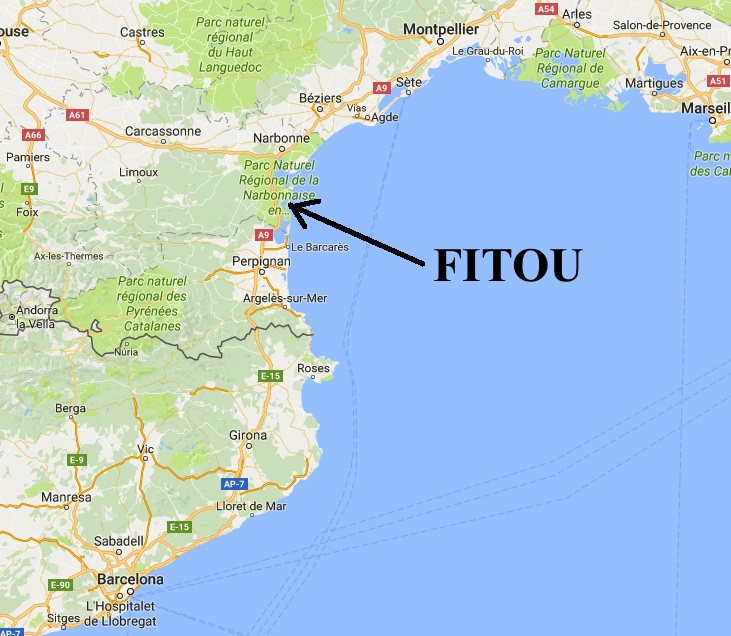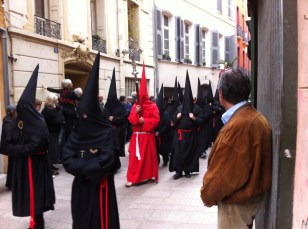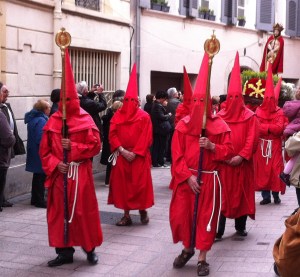A year ago today…
Strictly speaking, Good Friday 2013 was more than a year ago because it’s the department store chains that set the dates of holidays and they adjust for tides, precipitation and the price of hog futures, but Good Friday 2013 was an interesting and momentous day.
A year ago today I awoke in Fitou, about two-thirds of the way through my sabbatical there. It was a cool, sunny day, breezy as usual so close to the Mediterranean. Here is a picture of Fitou and a map showing where it is in the world.
The apartment where I lived was owned and had been renovated by a German couple who lived next door. Hagen and Christine do business consulting but are also avid DIYers. Here is a picture of that lovely apartment.
Tourism in Fitou is concentrated generally in the summer months and the village’s handful of restaurants only open from around Easter through to the autumn. It happened that one of these establishments, Restaurant Le Toit Vert, began its season that very weekend, so my German friends asked if I wanted to go with them that evening for dinner. I did.
Before dinner, though, there was an extraordinary day to have. After dinner, too, for that matter, but I get ahead of myself.
About 20 miles to the south of Fitou is Perpignan, and Hagen, Christine and I drove down there. It’s a medieval city of 120,000 dating to Roman times. It was a stop on the via Domitia, and Hannibal passed through town on his way to Italy. Perpignan has been home to Counts (of Roussillon and Barcelona) and Kings (of Majorca) but it’s been part of France for 350 or so years. JOB rolling papers are produced in Perpignan, a fact I did not know until just this minute.
A distinctive event in Perpignan is the Procession de la Sanch, which takes place every year on Good Friday. In medieval times, executions of condemned prisoners were carried out only once or twice a year, and as they were led through the streets to their demise they were dressed in the same robes and hoods as their executioners, partly as a gesture of compassion but also to prevent townspeople from taking revenge on the criminals, since they couldn’t make out who was who.
Over the centuries the procession comingled with Holy Week events, and it now features numerous groups of penitents, many of whom walk the three-hour procession barefoot, carrying representations of scenes of the Passion.
The Procession de la Sanch is a solemn event for the participants and I was concerned at first about gawking and taking pictures, but the city itself advertises it as a tourist attraction, and locals assured me that photography was absolutely allowed and expected.
The parade of hundreds of hooded men stirs unpleasant associations for an American, but it was important for me to remember that those were my associations and not related to the ritual these people performed every year.
The procession was generally quiet but some of the men rang bells, others beat drums slowly, and still others would pound their staffs on the ground to signal to his group to stop or resume walking.
The Procession de la Sanch is really something you ought to see once in your life.
On the way back to Fitou we stopped at a salvage yard where Hagen and Christine were looking for a piece of wrought iron for a project. The salvage yard people also kept chickens.

If Good Friday had ended there, with the Procession and the chickens, it would have been a world-class day. But a delicious dinner was still to come.
And then there were the Norwegians…
Stay tuned.












